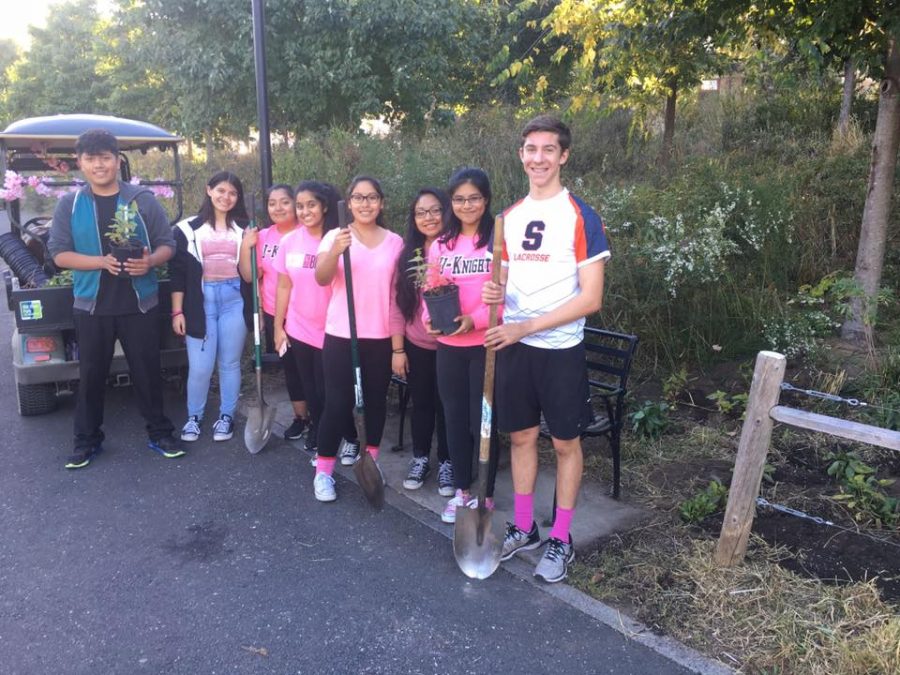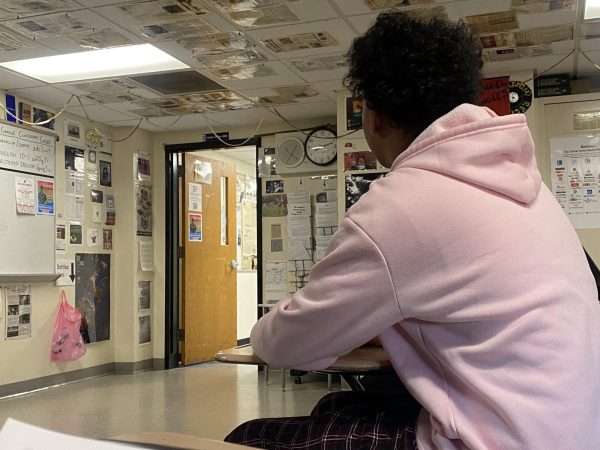Being More Eco-Friendly Starts With YOU!
June 10, 2019
With youth protests about climate change, plastic straw bans, and videos of an urgent Bill Nye circling on Twitter it is clear that the world is facing mounting concerns about the fate of our environment. Stirring widespread anger and fear to activate the public is one thing, but implementing real change presents an even greater challenge.
We, students, are the next generation of leaders and our actions today will have a major impact on our own future. Public officials and the media often skew the extent of urgency with which we need to act; some say we are safe for another fifty years, while others lament that we are already too late. Either way, I would rather not take that chance.
Being kinder to the environment does not have to be difficult, expensive, or time-consuming and often has many personal benefits. So why not try out a few? Your well-being, your wallet, and the environment will all thank you!
The good news is we are not utterly doomed. The future is in our hands and if we all implement even just a few of the strategies to follow, we can make a big difference.
DON’T idle your car
Gas emissions are one of the greatest contributors to global warming. For many of us traveling by car is the most convenient way to get to our everyday locations. While the best thing to do is limit driving as much as possible – use public transportation, walk, or bike instead – this may not be a viable option in some situations. With that said, the least we can all do is limit our fuel consumption by turning off the car immediately after arriving at a destination. This simple practice will also prevent wasting precious and expensive gas.
Bring your own cup to coffee places
Most coffee shops will fill your reusable cup instead of using a disposable one. Some stores like Starbucks and Dunkin Donuts even offer you discounts for bringing your own cup, so in that way, you will save money while reducing waste. Better yet, you can use a glass straw. Maybe it’s “bougie,” but definitely more aesthetically pleasing!
Unplugging your devices when they are done charging
According to an Energize CT report, a household can save up to $85 per year by simply flicking off power strips and removing cords from their outlets when not in use.
Bring your own bag
Do you ever go to the grocery store or the mall and end up with a mountain of flimsy plastic bags leftover? These single-use bags often get thrown out to end up in our landfills and oceans. Also, with Connecticut’s new plastic ban bag, you will either be left “bagless” or having to pay extra if you do not bring your own into the store. Save your wallet, the fish, and your pride by investing in two or three canvas shopping bags to keep with you for all your food and clothing transport needs.
Eat leftovers
According to the New York Times, in the United States alone, consumers waste over $160 billion in food waste annually! Food waste that is not composted goes to landfill where it emits greenhouse gasses that contribute to global warming. All the fuel and energy expended for transport and sale of that food also puts major stress on our atmosphere and environment. So, the next time you have a leftover apple from lunch or burger from dinner, repurpose it for another snack or meal. You could also participate in the “keep, take, trade” system being implemented at Stamford High. Any uneaten food can be placed in a refrigerator in the media center and exchanged for a different item or left there for someone else to enjoy free of charge.
Carpool instead
It is more fun that way anyway. Jam out to some tunes while also feeling like a cool, environmentally-conscious human being.
Bring a reusable water bottle everywhere you go
First of all, it will help you to get on “that health grind” by drinking more water. Second, you will save money and cut down tremendously on your yearly plastic consumption. The average American uses 13 plastic water bottles per month says one AIGA study. If each of those bottles is purchased from one of our school vending machines, that is $156 out of your pocket each year. It is likely that you have a reusable bottle lying around from a school event or fundraiser, so why not put it to good use?
Even better, replace your disposable bags and tinfoil with reusable containers. This year I saved over 180 plastic bags by simply replacing them with a single washable tupperware container.
Reuse old supplies and materials (AKA “thrifting”)
A major environmentally degrading factor of many developed nations is our tendency to consume more than we need. For example, every year kids and teens buy brand new school supplies, despite having many reusable materials from the previous year. This applies to many other materials that we probably do not think twice about throwing out such as glass bottles and jars, cardboard boxes, wrapping paper and old newspapers. Here are some ideas of how to repurpose these items:
- Clean out your empty jelly jar and use it as a glass for other beverages
- Reuse old shoe boxes for storing or transporting things
- Donate old magazines, newspapers, or wrapping paper scraps to art teachers (don’t you remember doing paper mache in elementary school?)
None of us will be perfect in implementing all of the strategies immediately. After all, we have grown up surrounded by a culture that encourages consumption. The way we can make change is if we all begin to shift our behaviors and mindsets toward more sustainable strategies. Start today by challenging yourself to begin following one of these practices!













